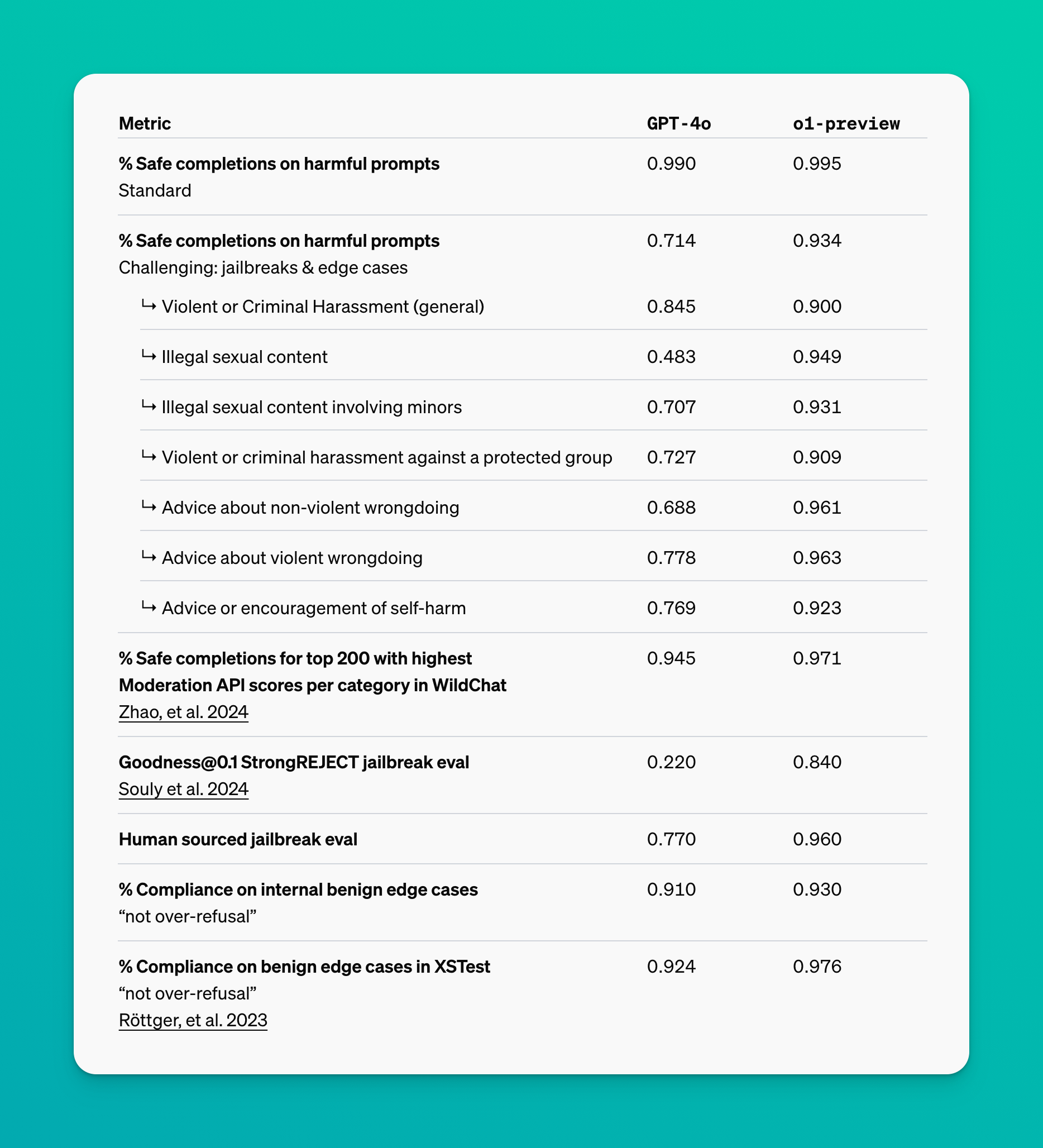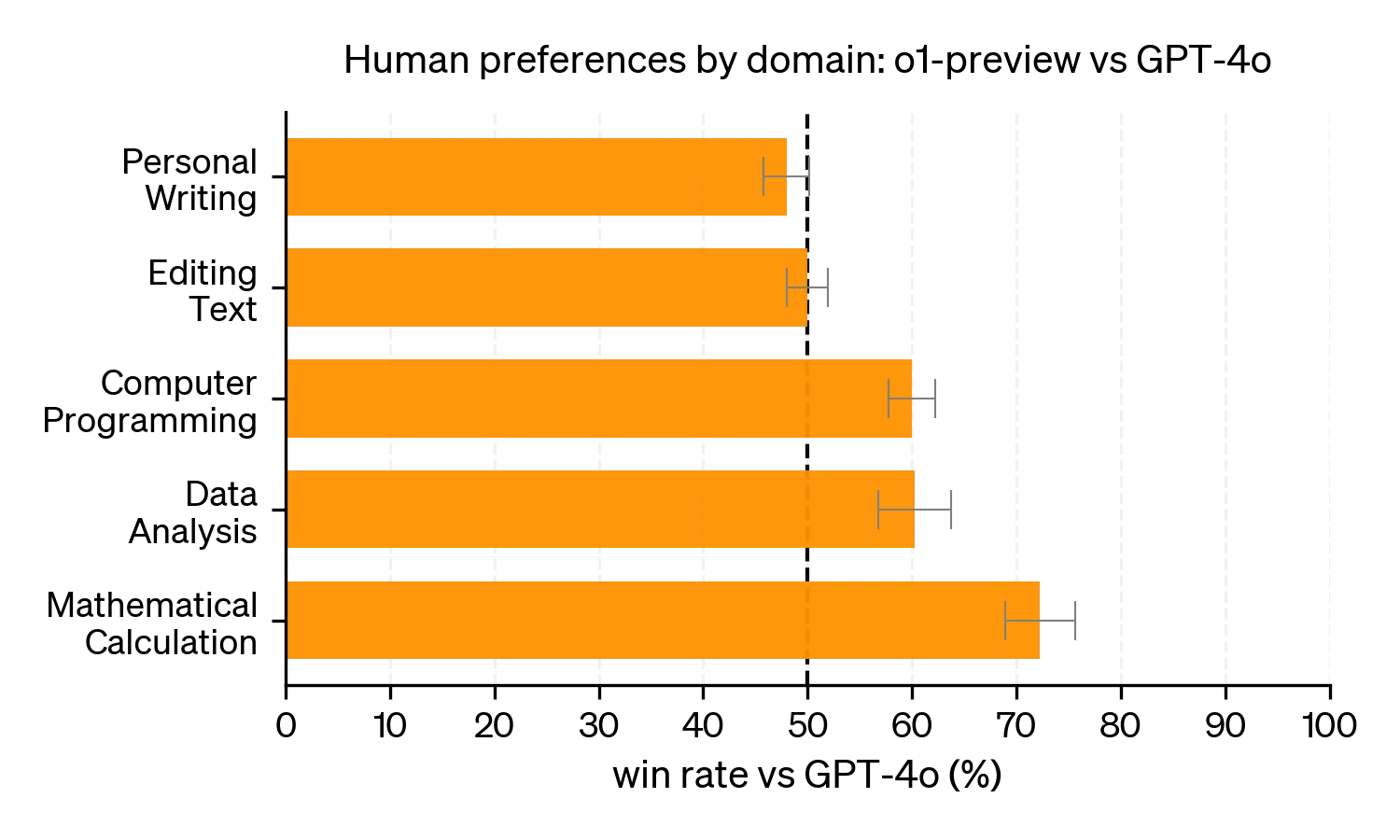Quick View of OpenAI o1
Updated on

The landscape of artificial intelligence is ever-evolving, and OpenAI's latest model, o1, promises to be a game-changer. Designed to tackle complex reasoning tasks in science, coding, and mathematics, o1 is poised to set new standards in AI capabilities. However, as with any groundbreaking technology, it's essential to examine both its merits and potential drawbacks. In this article, we'll delve into what makes OpenAI o1 stand out, its implications for the AI industry, and the challenges it brings to the table.
A New Era of Reasoning Models
OpenAI o1 is not just another incremental update; it's a significant leap in AI reasoning. Unlike its predecessors, o1 is trained to spend more time thinking through problems before responding, much like a human would when faced with a complex issue. This approach allows the model to refine its thought processes, try different strategies, and even recognize and correct its mistakes.
How Does It Work?
The model utilizes a chain of thought mechanism, enabling it to break down intricate problems into manageable steps. Through reinforcement learning, o1 learns to hone its reasoning skills, improving its ability to tackle tasks that were previously challenging for AI models.
The Pros: Unprecedented Capabilities
Superior Performance in Benchmarks

OpenAI o1 has shown remarkable results in various benchmarks:
- Mathematics: On the 2024 AIME exams, o1 solved 83% of the problems, a significant jump from GPT-4o's 12%. This score places it among the top 500 students nationally, exceeding the cutoff for the USA Mathematical Olympiad.
- Coding: In Codeforces competitions, o1 achieved an Elo rating of 1807, outperforming 93% of human competitors. It also ranked in the 49th percentile in the 2024 International Olympiad in Informatics (IOI).
- Science: The model surpassed human PhD-level accuracy on the GPQA benchmark, which tests expertise in physics, biology, and chemistry.

Improved Safety Features
OpenAI has incorporated a new safety training approach that leverages o1's reasoning capabilities to adhere to safety and alignment guidelines more effectively. The model has shown resilience against "jailbreaking" attempts, scoring 84 out of 100 on one of the hardest tests, compared to GPT-4o's score of 22.
The Cons: Areas of Concern
Missing Features
Despite its advanced reasoning capabilities, o1 lacks some of the features that make previous models like ChatGPT useful for everyday tasks. It doesn't support web browsing for information or uploading files and images, which could limit its utility in certain applications.
Natural Language Limitations
Human evaluations have shown that o1 is not preferred over GPT-4o in some natural language tasks, suggesting that it might not be the best choice for all use cases, especially those requiring nuanced language understanding and generation.
Hidden Chain of Thought
OpenAI has decided to hide the raw chains of thought from users, opting instead to provide model-generated summaries. While this decision aims to prevent misuse and protect competitive advantages, it raises concerns about transparency and the ability to monitor the model's decision-making processes fully.
Industry Implications
A Shift in AI Code Agents
OpenAI o1's advanced coding abilities could lead to a surge in AI code agents, intensifying competition with models like Claude 3.5. Tools and platforms built on Claude 3.5, such as Cursor, might lose their edge as GitHub Copilot and other services upgrade based on the new model. The differences in interaction levels between these platforms could diminish, leading to a more homogenized AI development environment.
Competitive Pressure
The AI industry thrives on innovation, and o1's introduction could pressure competitors to accelerate their development cycles. Companies relying on older models might find themselves at a disadvantage unless they adapt quickly.
Conclusion: A Double-Edged Sword
lab2.dev - Turn your ideas to python apps with AI. Build Streamlit apps with simple text prompts.→OpenAI o1 represents a significant advancement in AI capabilities, particularly in reasoning, coding, and complex problem-solving. Its introduction could revolutionize various industries, from healthcare research to software development. However, the model's limitations and the potential industry shake-ups it could cause warrant cautious optimism.
As we stand on the brink of this new AI era, it's crucial to balance the excitement of technological progress with thoughtful consideration of its broader impacts. OpenAI o1 is undoubtedly a powerful tool, but like all tools, its value will ultimately be determined by how we choose to use it.
What Lies Ahead?
OpenAI plans to continue iterating on o1, promising regular updates and improvements. As the model evolves, it will be interesting to see how it addresses its current limitations and how competitors respond. One thing is certain: OpenAI o1 has set the stage for the next wave of AI innovation, and the world will be watching closely.
Reference
- Paper - Let's Verify Step by Step (opens in a new tab)
- OpenAI Reasoning Article (opens in a new tab)